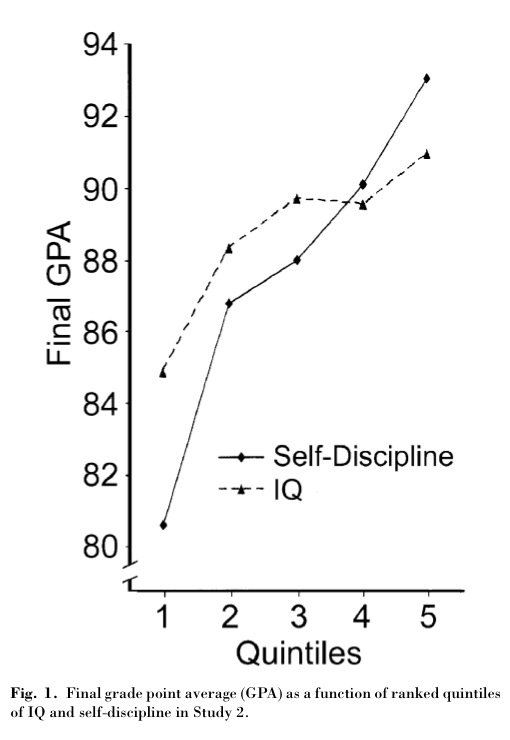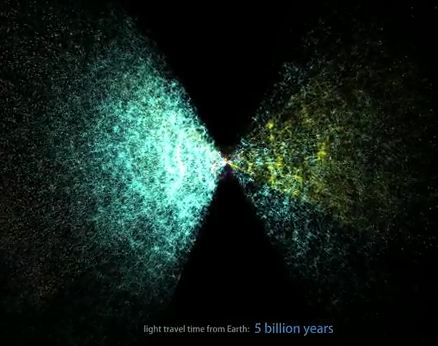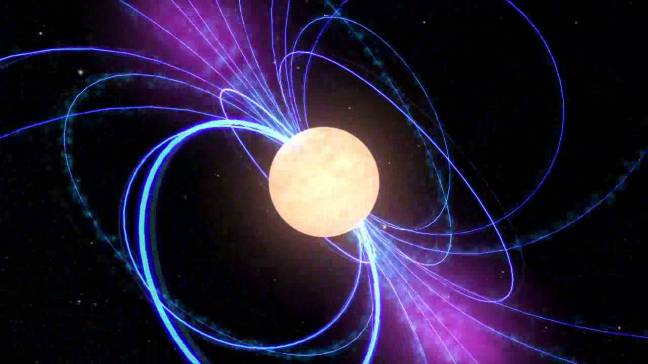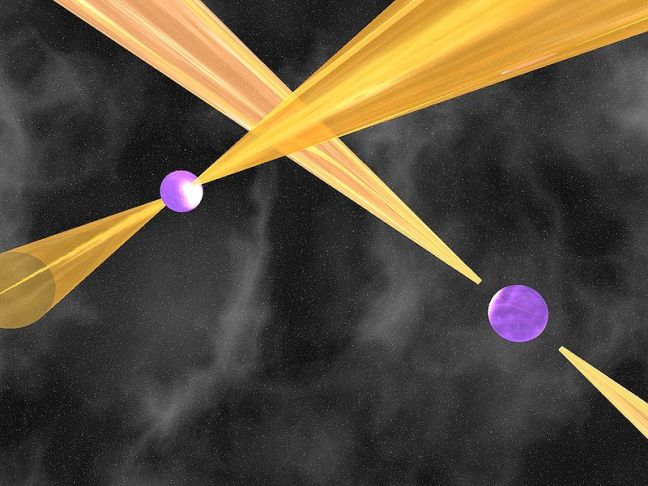What factors determine success? What can science tell us about the best ways to learn? Over the past few months I’ve been doing a little research in this area. In this post, I’ll be discussing how to get into the right frame of mind to learn anything, dispelling a few myths about what it takes to become a scientist and talking about a few things that inspire me as a student of physics. Enjoy!
Growth vs Fixed Mindsets
Self-discipline and perseverance have been shown to be far better predictors of success than IQ, social intelligence, good looks, physical health, family income or standardised test scores, among many other factors. To illustrate this, here we have a graph of self-discipline vs IQ as a predictor of final exam scores for American students who were arranged in groups, or quintiles, of 1 to 5 (lowest to highest) in each of the two categories. Here we can see that there is a much greater variation in results depending on how self-disciplined a student was, meaning that self-discipline has a greater impact on performance, and we can see that those in the highest category for self-discipline performed better on average than those in the highest category for IQ.

So why are they different? Surely the smartest people know what they’re doing, right? Not necessarily. To understand why, we turn to the science of mindsets.
Researchers have found there are two key mindsets – Fixed and Growth. These can occur regardless of a person’s intelligence and are related more to attitude, and how we perceive ourselves in relation to the world. First, let’s try to get a feel for which mindset you have. Which statements do you agree with most? Answer honestly.
- Your intelligence is something very basic about you that you can’t change very much.
- You can learn new things, but you can’t really change how intelligent you are.
- No matter how much intelligence you have, you can always change it quite a bit.
- You can always substantially change how intelligent you are.
Questions 1 and 2 are the Fixed mindset statements and 3 and 4 are the Growth mindset statements. But what’s the difference?
Fixed mindsets care about being judged, about already being good at something, and if they fall short of that they believe there’s nothing they can do about it.
Growth mindsets, meanwhile, become excited by challenges and see failure as an ordinary part of the process of learning. An opportunity to learn, in fact.
Science agrees with the Growth mindset. Studies show that those with this mindset are far more likely to develop perseverance, self-discipline and therefore success. Studies across ages using tests and puzzles show that those with a growth mindset, even if they struggle with a particular difficulty level of test or puzzle, once they solve it, are eager to move onto the next level of difficulty even if it means increased rate of failure before they come to the answer. This is known as the ‘Learner Mindset’ – try, fail, get back up again, get better. Those with fixed mindsets on the other hand will reach puzzles where they struggle at first, then prefer to remain at that level of difficulty in order to avoid future failure, or even stop altogether before they’ve solved it.
Though not always, intelligent children are more likely to fall victim to the fixed mindset because they’re praised for their intelligence rather than their ability to persevere through problems. As a result, when they fail at something, their automatic response is to feel they’ve reached the limit of their intelligence and they stop trying. Those that are average or even below average are more likely to realise that if they work at something they can learn. Thankfully, whoever you are, there’s something you can do to escape a fixed mindset. Try this:
Tape this graphic summary and these questions to your mirror, study board, blank space on your wall or anywhere else that you’re likely to look every morning (Edit – the image appears a little small in the blog, so here’s a link to Growth and Fixed). Each day, use it to remind yourself of the difference between the mindsets and ask yourself these questions (writing down your answers will help). It’s okay if you miss a day here or there (it happens!) but try to keep it up as much as you can and eventually this way of thinking will become a habit (we’ll be discussing the science of habits a little more in my next post).

What are the opportunities for learning and growth today? For myself, for the people around me?
As you think of opportunities, form a plan, and ask:
When, where and how will I embark on my plan?
Any obstacles in your path? Form a new plan and ask yourself the question again.
Regardless of how bad you might feel, do it! Then once you’ve succeeded, ask:
What do I have to do to maintain and continue the growth?
In success, luck favours those who try. The only guarantee in life is none if you don’t. This method will let you have some say in your direction.
Perseverance in Science

So, does this apply to the ‘Geniuses’ or ‘Greats’ of science? Absolutely. Einstein? Expelled, struggled to find work after graduation, made mistakes, had help and inspiration and had to learn Physics the same way as everyone else. Darwin? Bounced from subject to subject before finding himself in Naturalism, faced illness, the death of three of his children and hesitation to publish his controversial ideas. Jocelyn Bell Burnell? Spurned for a Nobel prize for her discoveries, didn’t bat an eyelid and went on to enjoy a successful career. Kay Redfield Jamison? Suffered from mental illness for years before turning that into a strength by devoting her life to understanding it. Fabiola Gianotti? Initially studied in the humanities before deciding she wanted to explore science and became the project leader for ATLAS at CERN. Peter Higgs? Waited 50 years for his predictions to be confirmed. Santiago Ramon y Cajal? Jailed at 11, developed an interest in anatomy in his late teens and was undeterred when faced with those who’d had a better start in life. In his own words, ‘perseverance is the virtue of the less brilliant’. He went on to become known as the father of modern neuroscience (the science of the brain).
Are there geniuses? Certainly, but in each of these examples perseverance, passion, team work and personal growth were absolutely vital to the scientific experience. The idea of the lone genius is largely a myth, and we all face challenges as we go through life. The amount he worked alone on his theories was quite rare in Einstein’s day and virtually unheard of today. To really hammer this point home, here’s a map of the Universe we’ve observed so far:

Contained in this picture is everything we currently know. Those dark patches? Yet to be explored. Every single little dot is a galaxy, amounting to more than 100 billion in total, each containing billions of stars like our sun. Humans have taken thousands of years to get to this point, and we’re in a privileged position where we have the chance to learn so much of and even add to it in our short lifetime. True, the percentage of humanity that has contributed to this is relatively small, but it’s a lot bigger than we often imagine. This view was built by more than just a handful of pioneers.
In places like CERN where the Large Hadron Collider can be found, it takes teams of thousands to research their findings, often split into two main branches – Theorists, who interpret and predict data using maths, and Experimentalists, who run the machinery and supervise the collection of data. This is the reality of science today. It’s a team effort, and we all learn together. Don’t worry about figuring it all out yourself. That’s too much pressure for anybody! You’ll always have help, and you can always help yourself by persevering when times get tough, and they will.

So with all this in mind, why do I study Physics? Originally I studied in the Arts and Humanities. Though I’ve been interested in science for a long time and am still interested in the arts now, the realisation that Physics and Mathematics were what I wanted to do came to me a little later. Of course there are challenges, but here’s a little taster of some of the amazing things I’ve learned (and will be sharing with you as we go along) that remind me I’ve made the right decision, for me:
Pulsars

Neutron stars are a rare type of star that are born when an ordinary star, much larger than the sun, runs out of fuel in its core and begins to collapse. The collapse is so great in fact, that electrons that normally spin around the nucleus of the atom are pushed into the centre with the rest, combining with the protons to form more neutrons. As a result, the mass of the huge star, usually many times larger than the sun, is packed into the size of a city, and safe to say it’s pretty angry about it. All the energy used to spin the large star is now packed into a very small area, which makes the star spin rapidly, often thousands of times per second.

Even more extreme, pulsars are a special type of neutron star that fire huge beams of energy out from their poles. What if the North and South poles on Earth had huge laser beams firing out of them every second? I imagine the Penguins and Polar Bears would complain! The phenomena that allowed Burnell to discover them is called The Lighthouse Effect, where the brightening and dimming of the star as the beams spin toward and away from our view on Earth is incredibly regular, like the ticking of a clock. Giant space clocks with powerful energy beams. Cool.
Binary Stars

Typically when a solar system forms, the star and planets all arise from the same collection of gas and dust, often left over from the remains of other, dead stars. Sometimes stars form so closely to each other that they become Binary Star Systems. In fact, we know that Jupiter is made largely of the same material as the sun, and if Jupiter had been just a few dozen times bigger, it’d be big enough to begin fusion and become a tiny, second star in our solar system. Jupiter and the Sun would then orbit each other while the rest of the planets would orbit them both. So much of how life has been shaped on our planet has to do with our relationship with the sun, which would be completely changed if we had a second star. What would life be like? I bet it’d look very different. Maybe we wouldn’t be here at all.
General Relativity

Einstein’s most famous theory tells us that space and time are one thing, called Spacetime, that behaves like fabric on which objects with mass, like stars and planets, rest. The bigger the mass, the bigger the bumps and curves these objects make in the fabric of Spacetime. Even light travels around these curves. We often think of gravity as pulling things towards the Earth, but actually, everything that approaches Earth is sliding down an extra-dimensional waterslide. Since we know Spacetime is one thing, time also becomes curved as we approach the bottom of the slide. Say there are two twins and one becomes an astronaut that spends some time in space. The longer the astronaut spends time further away from Earth, the more slowly he ages compared to his twin. This has been done! Time isn’t the same for everybody.
Putting It All Together
It’s my dream to become a Theorist. I enjoy playing with ideas and the maths behind them. Today we won’t be going too much into the maths, but let’s add these three ideas together and see what happens, shall we? Enter *dramatic music* – The Binary Pulsar System.

In 2003, the first double pulsar system, PSR J0737-3039, was discovered. These are incredibly rare. Both stars have to survive their partner star’s supernova explosion (which happens when heavy stars die) and both have to become pulsars, as opposed to just neutron stars. They’re also an excellent way to test Relativity. We know from the crushing together of electrons and nuclei that a pulsar is able to pack a whole lot of mass into a small space, and we know from relativity that mass is what curves the fabric of spacetime, so with even one pulsar we have a whole lot of curvature in a small area.
When we put two pulsars together in a binary system, strange things happen. The huge curvature of spacetime produces gravitational waves, like ripples in the spacetime fabric, that release energy from the system, and the flashes no longer appear regular. Two vast, violent, dense, powerful clocks, spinning around each other in the vacuum of space, slowly winding each other out of time – this is just one of the many beautiful things I’ve learned about in my time as a student of Physics.
The Universe is such a big and fascinating place, and hopefully with this post I’ve shown that anyone can learn about it if they come in with the right frame of mind. It can also help to know the best strategies for learning, and next month we’ll be diving into the brain to see what it can tell us about the best ways to learn. Stay tuned!
– Gerry
(For more science chat, see my personal wordpress – coffeeandquasars.wordpress.com)


Reblogged this on Coffee and Quasars.
LikeLike